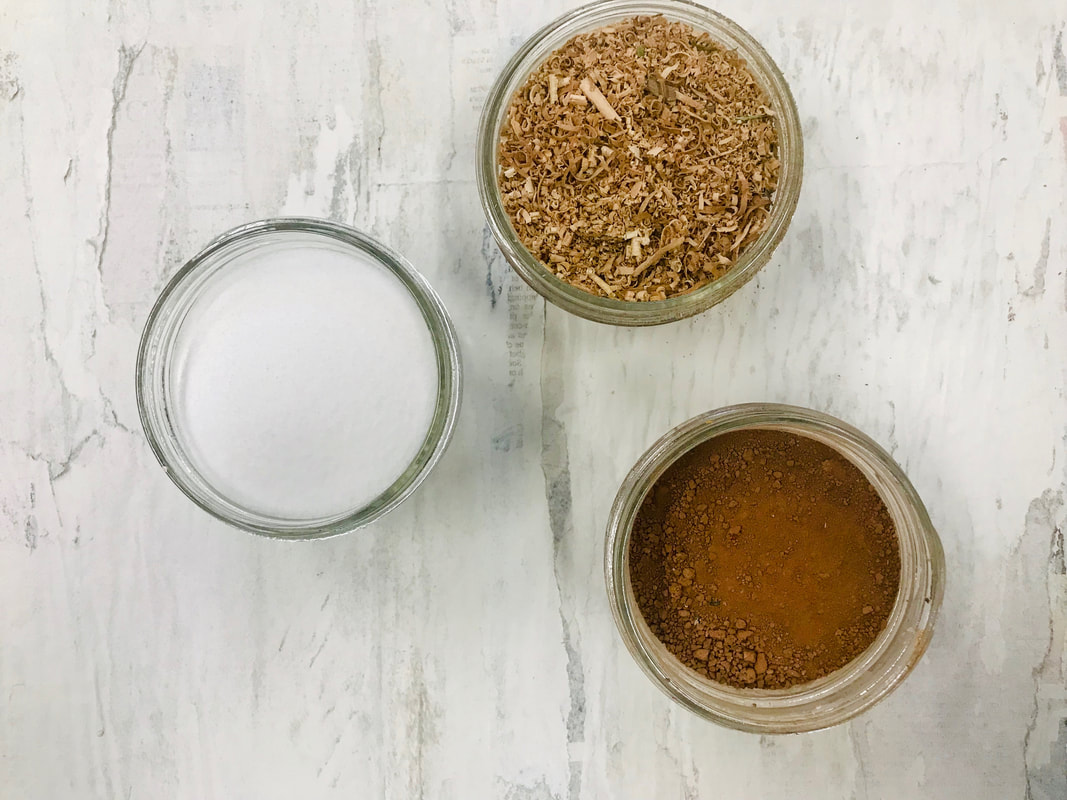|
Over the past 12 years as a professional artist, I have explored hundreds of ways to make my own acrylic texture mediums. Some of these experiments have been a huge success, and I love to share these in my workshops. Others have sent my entire family running outside for some fresh air because the fumes I created with my "concoctions" were so toxic. Quite simply, when you limit yourself to shopping only at the art store, you limit yourself. For me, art is free, fearless and limitless, so I like to explore my options and make my own rules. I believe the best kind of art is autobiographical, so I encourage you to find ways to infuse your life and personality into your canvas. After all, you are the subject matter you know best. The following is a list of 99 items I have personally used (mixed with acrylic paint), to create texture on my canvases: Hardware Store: 1. Caulking 2. Epoxy Resin 3. Grout 4. House Paint 5. Key Shavings 6. Plaster of Paris 7. Quickrete 8. Spackling Paste (highly recommended) 9. Varathane 10. Wood Glue 11. Wood Stain Backward: 12. Ash 13. Bark 14. Bones 15. Bugs (unintentionally) 16. Charcoal 17. Cigarette Butts 18. Coconut Fronds 19. Dirt (highly recommended) 20. DriftWood 21. Feathers 22. Flowers, Dry 23. Gemstones 24. Grass, Dry 25. Leaves, Dry 26. Metal Pieces 27. Moss 28. Peeling Paint 29. Pebbles 30. Salt (highly recommended) 31. Sand (highly recommended) 32. Sawdust (highly recommended) 33. Sea Shells 34. Small Rocks 35. Soot Bathroom: 36. Essential Oils 37. Hair Dye 38. Hair Spray 39. Henna 40. Hydrogen Peroxide 41. Make-Up (Foundation, Lipstick, Eyeliner, Blush, Eye Shadow & Mascara) 42. Nail Polish 43. Rubbing Alcohol (highly recommended) Cleaning Cabinet: 44. Bleach (not recommended) 45. Bluing Fluid 46. Furniture Polish (not recommended) 47. Laundry Detergent, Powder 48. Paper Towels 49. RIT Fabric Dye 50. Saran Wrap 51. Shoe polish 52. String 53. Wax Candles 54. Windex Closet: 55. Clothes 56. Fabric 57. Jewelry Home Office: 58. Book Pages 59. Cardboard 60. Chaulk 61. Elmer's Glue 62. Embossing Fluid 63. Flyers 64. Glitter 65. Gold Leaf 66. Highlighters 67. India Ink 68. Journal Entries 69. Magazine Pages 70. Maps 71. Metallic Powders 72. Mod Podge 73. Mouthwash 74. Newspaper 75. Packing Paper 76. Paper Towels 77. Posters 78. Sharpies 79. Sheet Music 80. Tissue Paper 81. Toilet Paper 82. Wrapping Paper Kitchen: 83. Alcohol Spirits 84. Beet Juice 85. Cheesecloth 86. Coffee, Grounds & Liquid 87. Crushed Seeds 88. Egg Shells 89. Glycerin (not recommended) 90. Herbs (Dill, Basil, Rosemary & Thyme) 91. Red Wine 92. Salt 93. Steel Wool 94. Sugar (not recommended) 95. Spices (Cinnamon, Paprika, Turmeric & Black Pepper) 96. Tea, Dried & Liquid 97. Vinegar (not recommended) Body: 98. Blood 99. Hair Disclaimer: My aim as an artist is to make the best work that I possibly can for my clients. This means creating work that will stand the test of time. While I have experimented with all of the items I have listed above, I have curbed my consumption over the years to mostly a handful of tried and true items to ensure the longevity of my paintings. Namely: salt, sand, sawdust, plaster, house paint, metallic powders, newspaper and paper towels. What will you infuse into your own canvas to tell your story? Comments are closed.
|
This blog was created to share my belief that the art-making process is a catalyst for transformation and personal empowerment. I am living proof.
Categories
All
|
